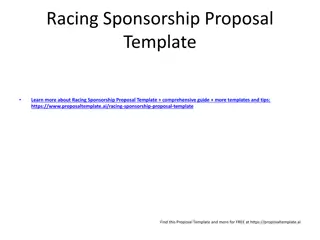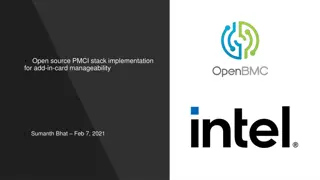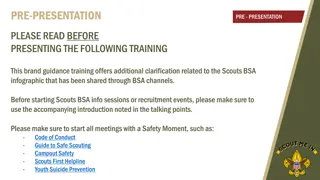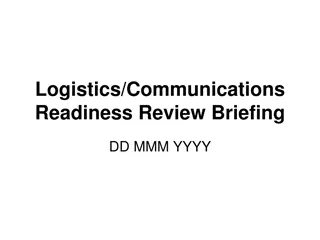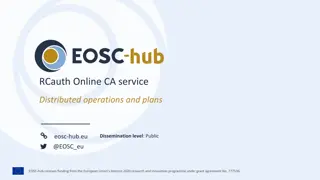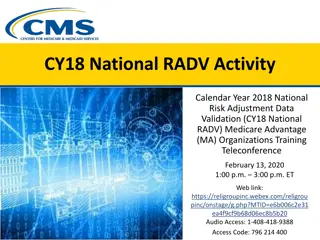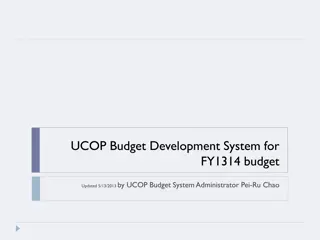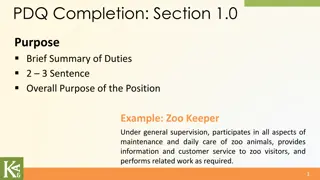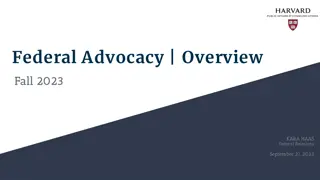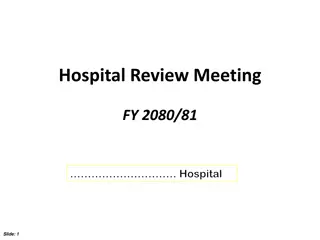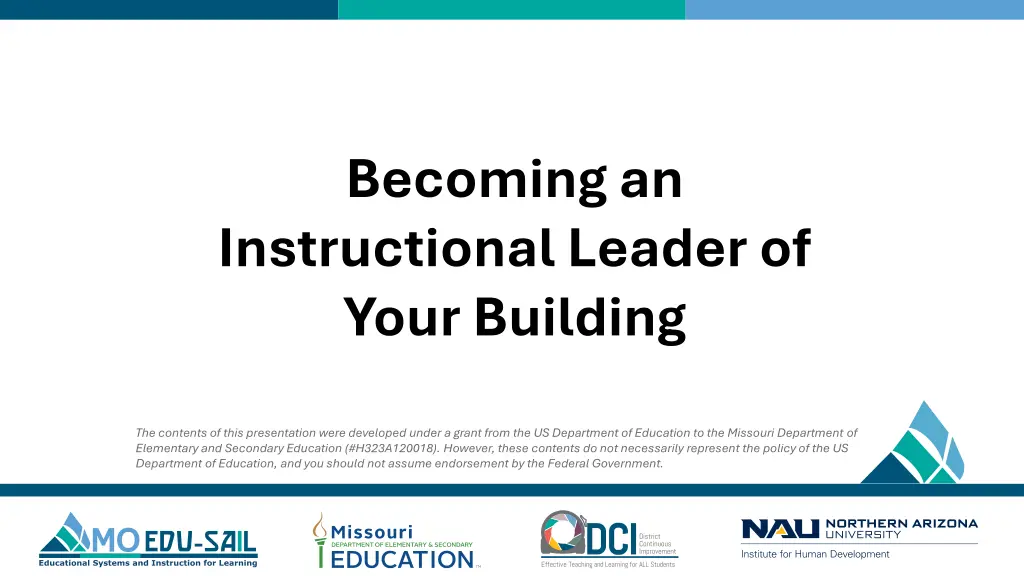
Instructional Leadership Alignment with MO Leader Standards
Explore the foundational elements of instructional leadership and its alignment with Missouri Leader Standards, focusing on teaching and learning quality indicators, management of organizational systems, and professional development best practices.
Download Presentation

Please find below an Image/Link to download the presentation.
The content on the website is provided AS IS for your information and personal use only. It may not be sold, licensed, or shared on other websites without obtaining consent from the author. If you encounter any issues during the download, it is possible that the publisher has removed the file from their server.
You are allowed to download the files provided on this website for personal or commercial use, subject to the condition that they are used lawfully. All files are the property of their respective owners.
The content on the website is provided AS IS for your information and personal use only. It may not be sold, licensed, or shared on other websites without obtaining consent from the author.
E N D
Presentation Transcript
Becoming an Instructional Leader of Your Building The contents of this presentation were developed under a grant from the US Department of Education to the Missouri Department of Elementary and Secondary Education (#H323A120018). However, these contents do not necessarily represent the policy of the US Department of Education, and you should not assume endorsement by the Federal Government.
Acknowledgements Special thanks to all contributors to the development of this Professional Learning Module. The original collection of Professional Learning Modules was rolled-out for use by Regional Professional Development Center (RPDC) Consultants in July 2013 after being developed by a team of content experts through efforts funded by the Missouri State Personnel Development Grant (SPDG).
Welcome and Introductions Our trainers for the day
Norms Begin and end on time Be an engaged participant Be an active listener open to new ideas Use notes for side bar conversations Use electronics respectfully
DCI Framework Focus on effective instruction leading to exceptional outcomes for ALL Missouri students Foundations Collaborative Teams Data-Based Decision Making Common Formative Assessment Effective Teaching and Learning Practices Developing Assessment Capable Learners > Feedback Metacognition Supportive Context School-Based Implementation Coaching Collective Teacher Efficacy Systems Leadership Instructional Leadership
Instructional Leadership Alignment with MO Leader Standards Standard #2 Teaching and Learning Quality Indicators Promote Positive School Culture Provide and Effective Instructional Program Ensure Continuous Professional Learning Standard # 3 Management of Organizational Systems Quality Indicators Manage the Organizational Structure Lead Personnel Manage Resources Standard #6 Professional Development Quality Indicator Increase knowledge and skills based on best practices
Session-at-a-Glance Overview and Impact Leadership: Management and Instructional Practices Critical Actions for Instructional Building Leaders: Getting Started Defining Areas of Instructional Focus Defining Key Actions of the Building Instructional Leader Employing Key Actions Across Areas of Instructional Focus Next Steps = Action Planning
Essential Questions Why is it important to establish and support a collaborative school culture? What are the benefits of implementing evidence-based effective teaching and learning practices throughout a school? How can the strategic use of assessments improve instruction? How and why should data drive building decision-making? What are the key actions and steps the building leader should take to improve areas of instructional focus in your school?
Course Outcomes At the conclusion of this module, building leaders will understand the following: The importance of promoting a collaborative school culture Evidence-based effective teaching/learning practices The importance of effective assessment practices used to drive instruction The benefits of data-based decision making How to develop, support, and monitor a plan to employ key leadership actions across areas of instructional focus
Overview and Impact of Instructional Leadership
Areas of Instructional Focus for Leaders Collaborative Culture and Climate Effective Teaching and Learning Practices Assessments Data for Decision Making
Read & Reflect High Impact Leadership Review the article High Impact Leadership by John Hattie. Mark with a star 1-2 items in the article that are powerful to you. Share your starred items along with why you think they are so important with your team. Each team summarize your take-aways and share with the whole group. http://kendrastantoine.weebly.com/uploads/5/4/2/8/54285355/high_impact_leade rship_-_hattie_(1).pdf
Effect Size A way to quantify the differences between two groups Effect size of d = 1.0 means advancing achievement by 2-3 years Typical impact is d = 0.20 to d = 0.40 Above average impact is d > 0.4 Excellent impact is d > 0.60 .40 (Hattie, 2008)
Effect Size .40 (Hattie,2021)
Specific Leadership Practices with High Effect Sizes Leaders who believe their major role is to evaluate their impact (ES=.91) Leaders who get everyone in the school working together to know and evaluate their impact (ES=.84) Leaders who learn in an environment that privileges high-impact teaching and learning (ES=.77) Leaders who set appropriate levels of challenge and who never retreat to just do your best (ES=.57) (Hattie, 2015)
Instructional Leadership https://youtu.be/9UYGrk1VpcQ (Hattie,2012)
10 Mindframes for Leaders 1. I am an evaluator of my impact on teacher/student learning. 2. I see assessment as informing my impact and next steps. 3. I collaborate with my peers and my teachers about my conceptions of progress and my impact. 4. I am a change agent and believe all teachers/students can improve. 5. I strive for challenge rather than merely doing my best. (Hattie & Smith, 2020)
10 Mindframes (cont.) 6. I give and help students/teachers understand feedback and I interpret and act on feedback given to me. 7. I engage as much in dialogue as in monologue. 8. I explicitly inform teachers/students what successful impact looks like from the onset. 9. I build relationships and trust so that learning can occur in a place where it is safe to make mistakes and learn from others. 10. I focus on learning and the language of learning. (Hattie & Smith, 2020)
Collective Leader Efficacy Leadership teams working together for collective impact! Beliefs Positive change is possible when leaders and teams work collectively. Action to create positive impact is a joint responsibility. Empowering educators to develop skills and capabilities to impact student learning is the goal. (DeWitt, 2021)
Collective Leader Efficacy Drivers Mindset Well being Context beliefs Working conditions Professional learning and development Organizational commitment Skills Confidence (Dewitt, 2021)
Moving Your Numbers Key Practices Include o Use data well o Focus your goals o Select and implement shared instructional practices o Implement deeply o Monitor and provide feedback and support o Inquire and learn What Matters Most: Key Practices Guide, National Center on Educational Outcomes (Fullan, 2008; Liethwood &Jantzi, 2008; Tefler, 2011)
The Mirage Report Findings Concerning Teacher Development More disciplined and coherent system for teacher development Network-wide culture of high impact Opportunities to practice teaching Increased collaborative practice with other teachers Shared sense of commitment o http://tntp.org/assets/documents/TNTP-Mirage_2015.pdf (The New Teacher Project, 2015)
Where Should Time and Effort Be Focused? Management Focused Tasks Instructional Focused Tasks Budget management Schedule targeted professional development Building personnel Meet with collaborative data teams Building processes Ensure teacher collaboration Student discipline Provide necessary resources (Hattie 2008, 2012, 2015)
Where Do You Spend Your Time? Management Instructional Ensure alignment of curriculum to MO Teaching Standards Create master building schedule Engage in classroom walkthroughs Manage building budget
Activity Test Your Knowledge About What Works! Influences on Achievement What impact (high, medium, or low) does each factor have on student achievement? (Corwin, 2021; Hattie, 2021)
High-Impact Influences & Effect Sizes Related to Student Achievement Teacher estimates of achievement, 1.46 Collective teacher efficacy, 1.36 Self-reported grades, 1.33 Cognitive task analysis, l.29 Piagetian levels (prior knowledge/background), 1.28 Math problem solving, 1.16 Response to intervention, 1.09 https://www.visiblelearningmetax.com/content/influence_glossary.pdf (Corwin, 2021; Hattie 2021)
More High-Impact Influences Associated with DCI Practices Outcomes based education, .97 Feedback (with reinforcement and cues), .92 Success criteria, .88 Micro teaching - video review of lessons, .88 Integrate with prior knowledge strategies, .86 Transfer strategies, .86 Classroom discussion, .82 (Corwin, 2021; Hattie 2021)
Low- or Negative-Impact Influences Related to Student Achievement Programmed instruction, .23 Within class grouping, .18 Reducing class size, .18 One-on-one laptops, .16 Tracking/Streaming, .10 Multi-age-grade classes, .04 Lectures, - .18 Suspension, - .20 Retention, - .32 (Corwin, 2021; Hattie 2021)
Global Research Data Base John Hattie Visible Learning https://www.visiblelearningmetax.com/Influences (Corwin, 2021; Hattie 2021)
Critical Actions for an Instructional Leader of the Building: How to Get Started
Steps to Get Started Know the critical areas of INSTRUCTIONAL FOCUS
AREAS OF INSTRUCTIONAL FOCUS 1. Collaborative Culture and Climate 2. Highly Effective Teaching/Learning Practices 3. Assessment 4. Data-Based Decision Making (Hattie, 2021, 2015, 2012; Hattie, Master, & Birch, 2016; Telfer, 2011)
Steps to Get Started Know the critical areas of INSTRUCTIONAL FOCUS Identify KEY ACTIONS of a building instructional leader
5 KEY ACTIONS OF A BUILDING INSTRUCTIONAL LEADER 1. Establish a collaborative culture and climate 2. Set time for implementation 3. Establish expectations 4. Ensure resources 5. Monitor for implementation and collaboration (Hattie, 2015; Hattie & Smith, 2018)
Establish Collaborative Team Structures Building Leadership Team Collaborative Teams (Hattie, 2015; Hattie & Smith, 2020; Lynch, 2020)
Team Membership Configurations Building Leadership Team Collaborative Teams School principal General education teachers Teachers Special education teachers Instructional coach Support staff Support staff (Lynch, 2020)
Building Leadership Team Configurations Elementary Example Secondary Example School leader/Principal School leader/Principal PK and primary grade representation Department staff representation Intermediate grade level representation Student support staff representation Non-core teacher representation Student support staff representation (Lynch, 2020)
Reflect & Discuss Is a leadership team already established in your building? Functions? Roles/responsibilities? Are collaborative teams established across grade/content areas? Functions? Roles/responsibilities? Are all staff on at least one collaborative team? Are collaborative teams running efficiently and effectively? How is that ensured?
5 KEY ACTIONS OF A BUILDING INSTRUCTIONAL LEADER 1. Establish a collaborative culture and climate 2. Set time for implementation 3. Establish expectations 4. Ensure resources 5. Monitor for implementation and collaboration (Hattie, 2015; Hattie & Smith, 2018)
Key Action: Set Time For Implementation Teachers need time during the school day set aside for collaboration that includes the following: Training/professional development Data collection Data analysis Team planning
5 KEY ACTIONS OF A BUILDING INSTRUCTIONAL LEADER 1. Establish a collaborative culture and climate 2. Set time for implementation 3. Establish expectations 4. Ensure resources 5. Monitor for implementation and collaboration
Key Action: Establish Expectations Develop and communicate high expectations Collaboratively, with your staff, discuss and develop the following. o What is our vision for our students? o How do we make this happen? Ensure a consensus from the entire staff. (Hattie, 2015; Hattie & Smith, 2020; Lynch, 2020)
Key Action: Establish Expectations All educators Accept responsibility for all students in all grade levels Participate in at least one meaningful collaborative teacher team to focus on the following. Effective teaching practices Analyzing assessment data Evaluating processes and student outcomes Encourage and support each other to be successful implementers of effective practices. (Hattie, 2015; Hattie & Smith, 2020; Lynch, 2020)
Reflect & Discuss What are the high expectations for my district? my building? educators in my building? How are these expectations infused into the culture and communicated across all levels of the system?
5 KEY ACTIONS OF A BUILDING INSTRUCTIONAL LEADER 1. Establish a collaborative culture and climate 2. Set time for implementation 3. Establish expectations 4. Ensure resources 5. Monitor for implementation and collaboration
Key Action: Ensure Resources Effective building leaders ensure that these resources are available to staff: People (internal/external) Time (job-embedded) Training/Professional Development Materials Money (Hattie, 2015; Hattie & Smith, 2020; Lynch, 2020)
5 KEY ACTIONS OF A BUILDING INSTRUCTIONAL LEADER 1. Establish a collaborative culture and climate 2. Set time for implementation 3. Establish expectations 4. Ensure resources 5. Monitor for implementation and collaboration

![❤[READ]❤ Deep Space Craft: An Overview of Interplanetary Flight (Springer Praxis](/thumb/21511/read-deep-space-craft-an-overview-of-interplanetary-flight-springer-praxis.jpg)



